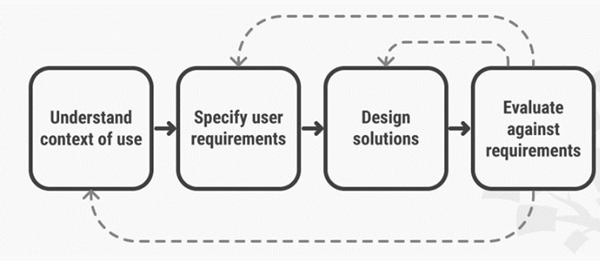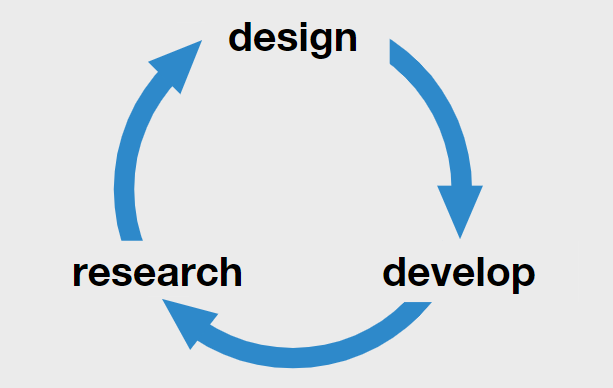The User Research steps
22/11/22 | A. Understanding User Needs | All Guidelines and DocumentationVersion 1.1
Version control table
| Version | Date | Comments |
|---|---|---|
| 1.0 | 13/5/2022 | Published Document |
| 1.1 | 22/11/2022 | Amendments – Added research steps and planning table – Updated section 1. Identify what the team wants to learn from user research – Updated section 2. Plan the user research sessions – Updated section 3. Prepare the research questions and script – Updated section 4. Assign note-takers and observers for each research session – Updated section 5. Do the research and take notes – Updated section 9. Repeat User Research according to the complexity of the project – Typos/spelling corrections |
User Research (UR) is a form of qualitative research that helps us to understand our users, identify the usability of designs and allow teams to respond to any problems before development or implementation.
User Research helps to create services where real users are at the heart of each service that is designed. This practice makes sure that our user’s needs are met.
User Research steps and Planning
Time Plan and User Research Steps
| A/A | Description | Status | Date From – To | Duration (in days) |
| 1 | Identify what the team wants to learn from User Research. | Completed | 1/5/2024-5/5/2024 | 5 |
| 1.1 | Prepare a workshop (i.e board) where the members of the team will be able to write down their questions according to their role and what they want to learn from the research. | |||
| 1.2 | Invite all members of the team | |||
| 1.3 | Do the workshop Prioritize the questions and decide what will be shown to the participant. | |||
| 2 | Plan the User Research session | |||
| 2.1 | Recruit participants according to the Service needs, decide the dates of the research sessions and send invitations accordingly. | |||
| 2.2 | Prepare a list with all meeting details (date, time, link invitation, typology, phone number, etc.) | |||
| 3 | Prepare the research questions and script | |||
| 3.1 | Prepare discussion guide and Formalities | |||
| 4 | Assign note-takers/observers for each research session. Decide how notes will be taken (i.e prepare a Note Takers Template for the team to use during interviews) and send invitations accordingly | |||
| 5 | Do the User Research sessions and take notes | |||
| 6 | Analyze Findings from the research. Come up with patterns and identify any problematic areas of the design. | |||
| 7 | Create typologies of users according to the Empathy Map | |||
| 8 | Share your research findings | |||
| 8.1 | Prepare presentation | |||
| 8.2 | Share your research findings with the Stakeholders and the Team Members (designers/analysts/ developers/architects/etc.) | |||
| 9 | Iterate: Decide when the next round of the UR will be repeated according to the complexity and timeline of the project | |||
| 10 | Drag all data to a safe GDPR-compliant place to protect the participants’ data and confidentiality |
1. Identify what the team wants to learn from User Research
The User Researchers should understand what is the scope of the project/service, study the current situation and the desired one, study whether there is already an existing digital Service or a paper form application and who are the users. As soon as this is done, then the researchers will prepare a brainstorming board/workshop, where all the team members should attend and brainstorm what they would like to learn (questions and assumptions) from the user, according to their role and experiences in the upcoming research rounds.
To help prioritize the questions, similar ones must be grouped together into themes and ask the team to vote which are most important. Roughly 5-6 themes are enough. Additionally, the team will decide what to show to the participant (ie. current paper form, dummy screens from the prototype or an interactive version of the prototype etc).
As soon as the meeting is done, the User Researchers must clarify and prioritize the questions and start planning the first circle of the UR round.
2. Plan the User Research sessions
Based on prioritized themes, the research team will decide on the:
- Dates, length and location of the research sessions
- Ways of interview: eg. Face to face interviews, interviews via web meetings,
- Type of user groups needed: according to the Service needs, a specific type of users might be needed (ie. age range, religion category, etc)
- Number of participants to recruit for research (approximately 8).
- Recruiting participants, getting necessary details and sending informal emails where needed
- Activities for the research script
- Number of research rounds that might be needed
- Devices, tools and resources needed for the research sessions to run smoothly
- Type of research: usability testing, contextual observation etc
- Assign and Find Note Takers and Observers (if needed)
- Decide how notes will be taken. (for example, prepare a Note Takers Template for the team to use during interviews).
When doing accessibility testing, make necessary arrangements for planning participants and interviews with people with special needs.
3. Prepare the research questions and script
Having the questions taken from “Step 1 – Identify what the team wants to learn from the user”, the User Researchers should read in detail the service needs. It is preferable that the researchers contact the business owner to talk (as a first step) about the problems of the current situation, the citizens’ complaints, the ideal solution, as well as what the team wants to learn from the user.
As soon as this is done, the researchers will start preparing the Script to follow in the research sessions. It is important that the script is followed as best as possible so that findings can be compared across participants.
The script should include:
- Logistics (ie. Purpose of this round on research, Links to useful documents, Attendee names, Length of the session, Research dates & times, Meeting options, Session structure)
- Desired Participant type (Number of Participants, Demographic characteristics)
- Discussion Guide and Formalities
- Interview Questions
4. Assign note-takers and observers for each research session
The User Researchers should assign roles to members of the team to note-take and observe at least one research session each. This will help create more empathy within the team for your users and understand why design iterations happen. The researchers should send invitations to all note-takers, observers and participants and create a spreadsheet with all necessary details (invitation link, time and date of meeting). The researchers should also prepare the note takers template for the Note Takers.
Be sure to brief your observers and note-takers on the research ahead of the sessions, so that they know what to expect and to know what notes are most important to capture.
Any personally identifying participant details captured when scheduling participants or note-taking must be GDPR compliant to protect the participants’ data and confidentiality.
5. Do the research and take notes
Join the interview 10 minutes before and confirm that there are no technical issues with your connection. Welcome all the participants and separate the screens so the person that will be interviewed will not see the note-takers and the observers (this is only if you are doing research online).
Start the questionnaire by introducing yourself. Ask the participant if he/she gives their approval for recording the audio/video so that you can re-watch it later or use it during other promotional presentations. Start the questions of the questionnaire.
As soon as the research session is done, then the Note takers should combine and clean all the notes taken during the session. This means removing duplicates and personally identifying details of the participant as well as making sure the notes are legible and ready for analysis.
6. Analyze Findings from the research
To synthesize the findings, analyze all notes and find patterns in your participants’ behaviours or thought processes. Study all the strong points that relate to the themes that you wanted to investigate from Step 1.
Make a summary of your findings, including:
- clear behaviours, reactions or thought processes,
- pain points,
- pleasure points,
- and recommendations for iteration
7. Create typologies of users
If you are at the beginning of your project, you can use your research findings to create typologies of your users. Typologies are user archetypes, or types of users, that you can use to help you make decisions about the service that your team is developing.
Typologies help the whole team to get to know their user types and to create better services for them.
8. Share your research findings
Once your findings have been synthesized, prepare a meeting to present and share the user research findings widely with all the team and service owner department.
Note: It is recommended to present your findings to your team, senior stakeholders and external stakeholders. This helps to make the team aware of what is working well and not working well for the users based on research. And, most importantly, it helps everybody empathize with the users.
The presentation should include:
- The themes or hypothesis set out to be tested in research
- User Research methodology
- Findings
- Participant quotes
- Video/audio snippets from the research sessions (only if the participant has consented)
The team will work to iterate the current design based on the user research findings.
The User Researchers will then prepare for another round of research (steps 1-7) based on the iterated design. This is to verify that the changes to the design or service successfully meet the user’s needs.
9. Repeat User Research according to the complexity of the project
According to the timeline/deadline as well as the complexity of the service, the team will decide how many user research rounds are needed. The desirable UR rounds/sessions usually are 4-5 starting from the current status (paper form and/or old system) and ending in the pilot phase. Exceptionally, if the deadline is tight and the complexity of the service is not high, then the User Researchers might need to decide to have fewer UR rounds.
All steps below must be repeated by the Researchers every round (as many decided).

